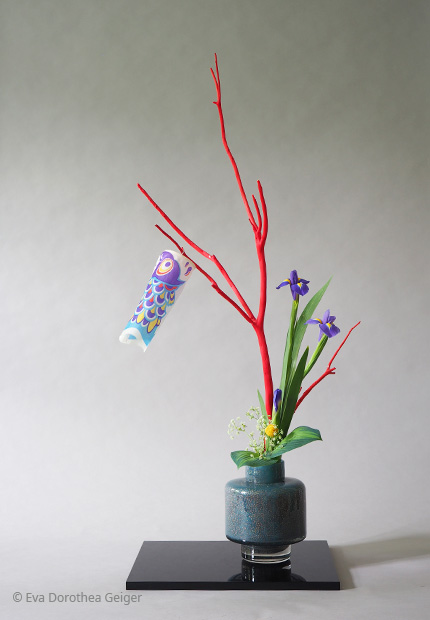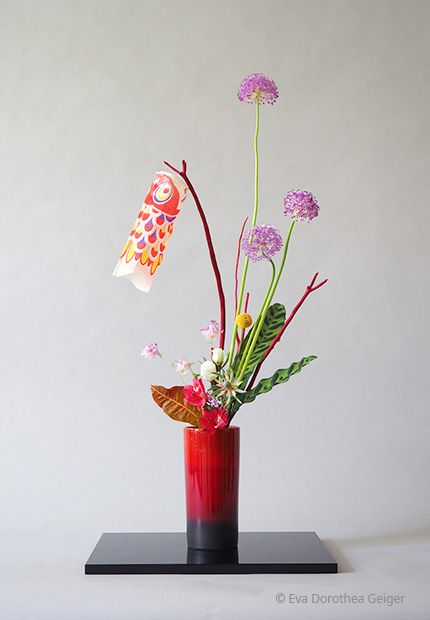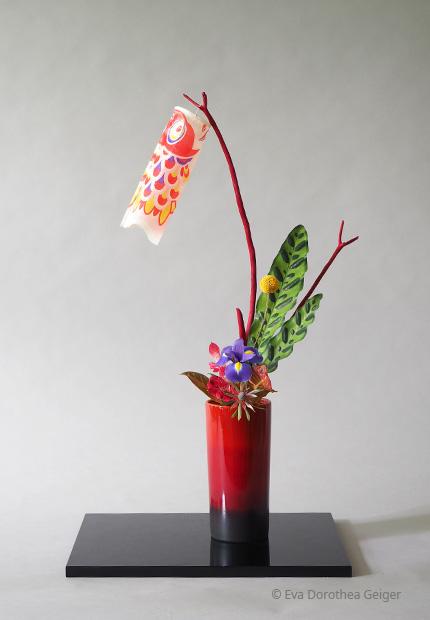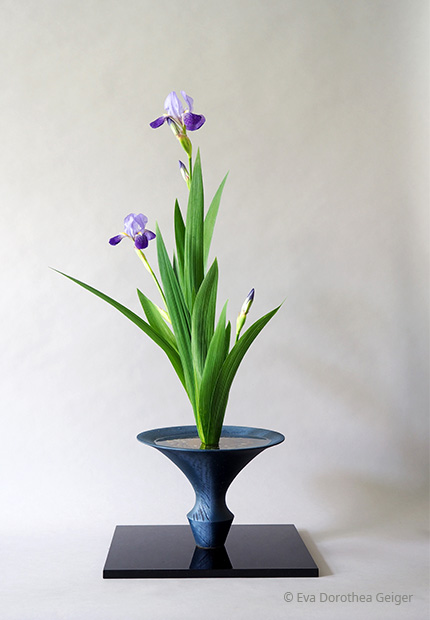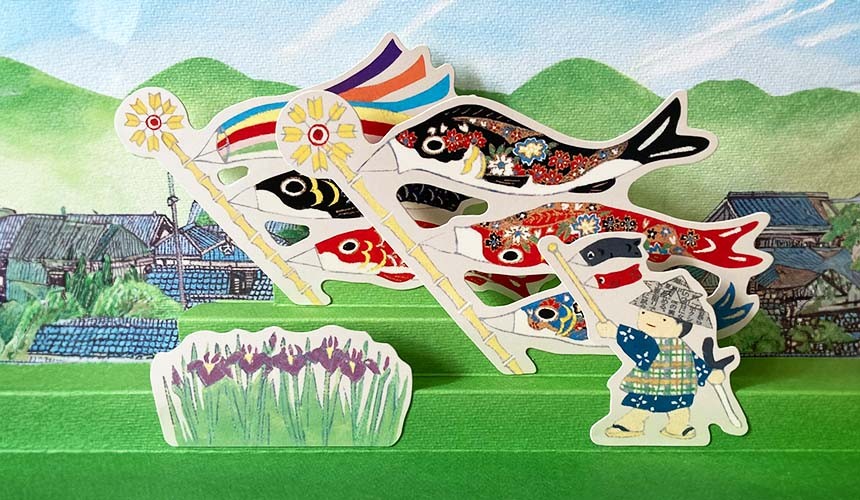
The day was originally called Tango no Sekku 端午の節句. It marks the beginning of summer (the rainy season) and is one of the five seasonal festivals (Sekku). Tango (Ta = edge / beginning) and go (noon) or five 五. Since ancient times, the fifth month of the Chinese calendar has been the month of purification, and many rites to ward off evil spirits.
At first, Tango no Sekku was known as the “Boys‘ Festival”, while Hina-Matsuri (“Girls’ Festival”) was celebrated on March 3. In 1948, the government designated May 5 as a national holiday to celebrate the joy of all children and express gratitude to their mothers. It was then renamed Kodomo no Hi.
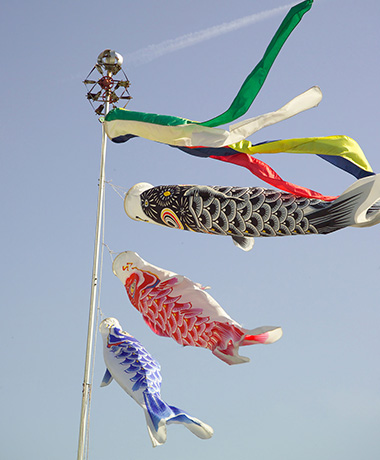
On Children's Day, nylon wind koi can be seen on long poles over rivers, in front gardens and increasingly in cities. In the days before Kodomo no hi, the so-called Koinobori 鯉幟 (carp flag) is hoisted. The first ones can already be seen at the beginning of spring in March/April, and on May 5 - Children's Day - they hang everywhere and in large numbers. Television towers such as the 333-metre-high Tokyo Tower (former television tower), at the foot of which 333 different-colored carp flags (some up to 6 metres long) fly in the wind from 25 March and can be seen until 9 May, also seem suitable. Skytree (the new TV tower) has adopted this custom and scores with 1000 colorful windsocks in the shape of koi and in the seaside resort of Tsuetate-Onsen in Kumamoto Prefecture, up to 3,500 carp flags fly over the river of the same name between April and early May.
The carp figures, constructed like windsocks, are made to 'swim' by the wind and stand for strength and assertiveness, as they have to swim against the current. If the effort was not enough, legend has it that one of them even conquered a waterfall and turned into a dragon. In Asia, dragons stand for a long life and have magical powers. The flying dragon is symbolized by the colorful stripes at the top, the fukinagashi, followed by the windsocks in the shape of a koi carp for each family member in a fixed size and color: black represents the father, red the mother, blue (and sometimes green and orange) the child. However, this was not always the case. In the Edo period, when this custom began, the koinobori were only black. In the Meiji period, the red color was added and it was only in the post-war period that it finally became really colorful. The carp represent courage, showing strength, facing up to problems and not giving up. These are the good wishes that parents want to give their children on this day. Of course, there is also a Koinobori song to go with this tradition
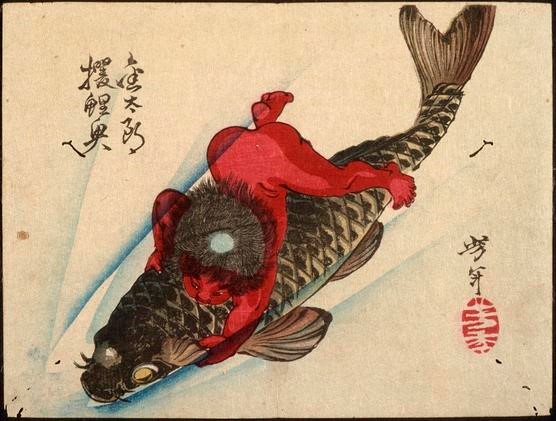
Samurai Strength / Gogatsu Ningyo 五月人形
Another tradition at Kodomo no Hi is the doll exhibition, known as Gogatsu Ningyo. Traditional samurai dolls, the Musha Ningyo 武者人形, their armor and military helmets (Kabuto) are often displayed around the house in the hope of teaching children virtues such as courage, bravery and wisdom. At school, children enjoy listening to fascinating stories of samurai legends and making their own paper kabuto helmets. Perhaps the best-known legend associated with Children's Day is that of the legendary figure Kintaro 金太郎. The nature boy grew up in the mountains, befriends the animals and possesses supernatural powers. Kintaro is depicted as a chubby child riding a carp and carrying the traditional samurai kabuto. It is hoped that Kintaro will inspire children with his kindness and bravery.
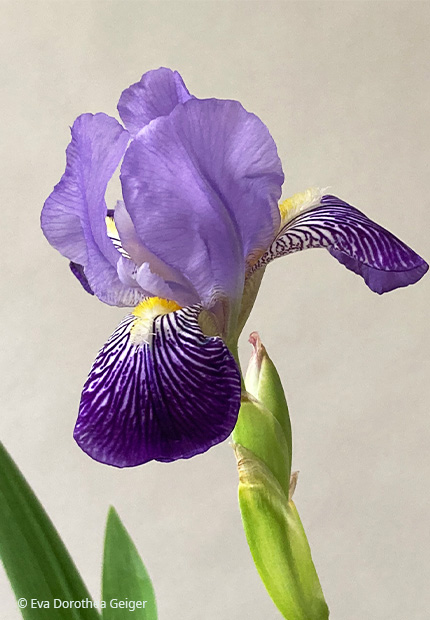
Flower Power with Shobu 尚武 / Iris flowers
At the beginning of May, the cherry blossom has faded in Japan and the iris flowers shobu are in bloom. In Japanese culture, these flowers are considered lucky talismans, with the power to calm raging fires and ward off evil spirits. To bring good luck to their children, iris flowers are placed in the house (e.g. as ikebana) or people take a bath syobuyu - with the leaves and roots of the shobu 菖蒲. Shobu 尚武 also means 'warrior spirit', which is also symbolized by the long leaves of the iris, which stand upright like swords. The threshold to the change of season, the Tango no Sekku 端午の節句 on 5 May, brings with it, like every change of season, a change in the body that makes us more susceptible to illness. Bathing in iris blossom water is said to strengthen our health and defenses and combat illnesses with a warlike spirit (Shobu 菖蒲).
In ikebana, iris flowers and their lance-like iris leaves are used in the arrangements for Kodomo no Hi - in keeping with this tradition - and sometimes the koinobori also find their place there, as in the first two arrangements and variations shown. In the spirit of Kodomo no Hi, we wish all children (and their parents) courage, strength and a sincere sense of purpose to master upcoming challenges.
